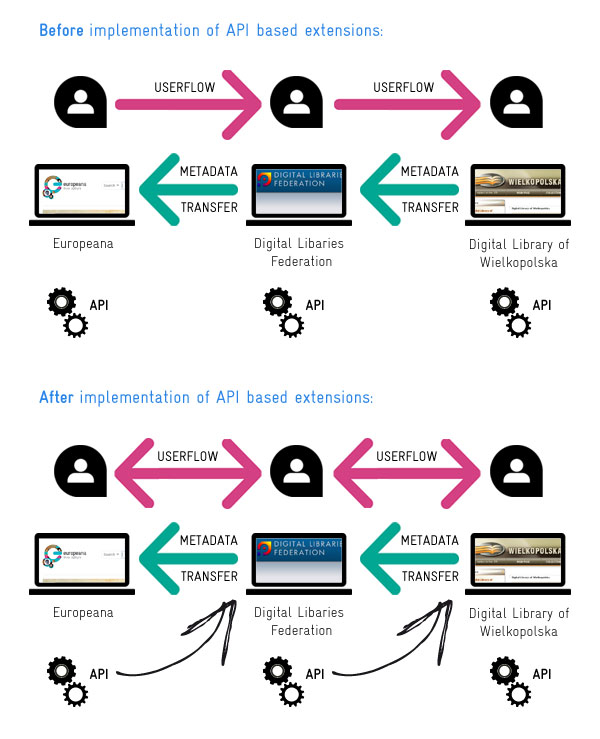Case Study: Europeana API Implementation in Polish Digital Libraries
It’s time to share another insightful case study on the use of open data, this time from our friends at the Digital Library of Wielkopolska (DLW) and Digital Libraries Federation (DLF) in Poland. Along with case studies already published by Europeana and the National Gallery of Denmark (SMK), this case study was presented at the Open Data Case Studies Workshop that took place at the end of January in Paris. These case studies along with others will form a larger white paper on open data, due to be published later this spring – so keep your eyes peeled here for more examples that demonstrate the value of open data.
In 2009, PSNC, the operator of Polish Digital Libraries Federation, began working with Europeana and exploiting the potential of promoting Polish cultural heritage content across Europe with the aim of creating wider access and facilitating re-use of their content. Europeana’s API has provided a good platform for this, both enriching existing services and providing a wider breadth of content to users of the DLW and DLF services. Through a number of widgets, DLW and DLF have utilised Europeana’s API to bring in content from Europeana that is related to search queries on their existing websites. This provides end-users with more choice as results are returned from hundreds of other trusted heritage institutions across Europe via the Europeana API.

To learn more about the project we caught up Marcin Werla, author of the case study and Digital Libraries Team Leader at Poznań Supercomputing and Networking Center.
What is the ‘big idea’ behind this project?
MW: We’ve been working closely with Europeana since 2009 and we recognised the strategic potential to provide access to Polish heritage content to a wider pan-European audience. In 2010, shortly after the announcement of the Europeana API, we joined a pilot programme with the intention of creating an automated way of accessing aggregated data which could significantly increase the visibility of European cultural heritage among the users of Polish Digital Libraries.
How did the project create value for end-users, DLW and DLF?
MW: Thanks to the integration of Europeana’s API, we’re able offer our users the ability to search not only our collections, but the collections of hundreds of other heritage institutions across Europe. Through the widgets that we developed on top of Europeana’s API, we were able to integrate something that is seamless and adds value to the experience for users of Polish Digital Libraries; it was always our intention to include the integration within the current workflow of our users.
What benefits have resulted from these API implementations?
MW: After looking at the usage statistics we were impressed to see the number of our users clicking through to Europeana search results. For example, 5.17% of visitors who saw search results on DLF decided to click through to Europeana via the widget we developed. This clearly shows that enrichment based on the Europeana API not only directed users to an additional source of information, but also that they enjoyed this additional source.
What’s next?
MW: We will continue to utilise Europeana’s API within our current integrations and always explore new ways for Europeana’s data to be used via our different services. We would also like to see other institutions take a closer look at the Europeana API and consider implementing additional features for their systems based on this API – for us we have seen that it has really added value for our users on top of our existing services.
You can learn more about what the Polish Digital Libraries did and what the results were from the embedded case study below, or alternatively you can download it.
The Europeana API enables the development of applications, websites and mash-ups using the extensive heritage collections available via Europeana – it’s free and open to anybody. You can learn more about the API and discover what other institutions and individuals have done with Europeana’s 26 million records by visiting: http://pro.europeana.eu/api
